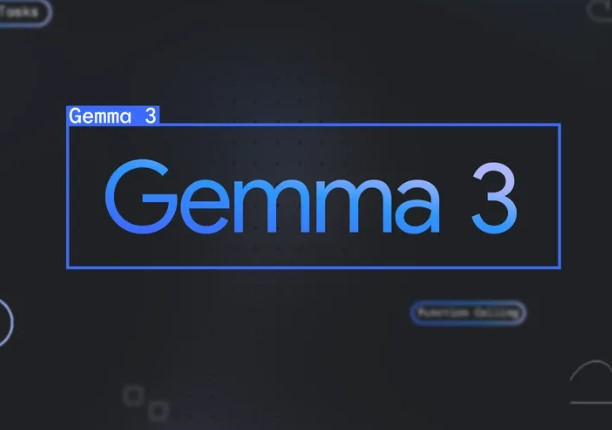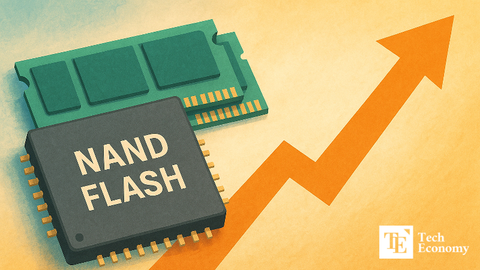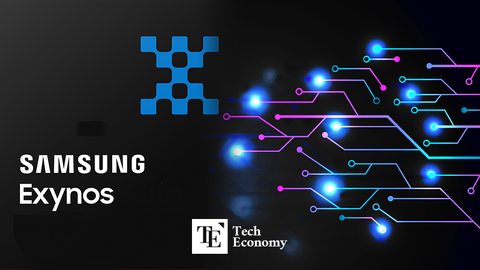Google’s Gemma 3: A Breakthrough in Open-Source AI with Single-GPU Power
Input
Modified
The Rise of Open-Source AI: How Gemma 3 Fits Into the Trend Gemma 3 vs. Competitors: Performance, Efficiency, and Innovation Why Single-GPU Optimization Matters for the Future of AI

The Rise of Open-Source AI: How Gemma 3 Fits Into the Trend
As artificial intelligence continues to grow in prominence, we are seeing a steady stream of innovations coming from tech giants. One of the most exciting developments in the AI world is the unveiling of Google's Gemma 3, a cutting-edge model that pushes the boundaries of what is possible in AI while also making a significant departure from previous models by being open-source and optimized for single-GPU use. The release of Gemma 3 could mark a transformative shift in the AI landscape, offering a new level of accessibility, performance, and cost-effectiveness for developers and companies alike.
In the ever-evolving world of AI, the idea of open-source models is not new, but with Gemma 3, Google has set the bar higher by combining advanced performance with an open-source framework that promises to be both powerful and efficient. This approach is a notable step forward, as it reflects the growing trend within the tech industry of creating more transparent, accessible, and collaborative AI technologies.
The concept of open-source AI has gained momentum over the past few years, with both large corporations and independent developers pushing for greater accessibility to AI models and technologies. Open-source AI provides an invaluable opportunity for collaboration and innovation, allowing developers to freely access, modify, and build upon the work of others. It promotes diversity in AI research and development and fosters innovation that could lead to breakthroughs in various fields.
Prior to Gemma 3, DeepSeek was widely recognized as one of the most advanced AI models, gaining acclaim for its highly accurate performance. However, it was typically confined to proprietary use, meaning that access to its full capabilities was limited. As a response to this trend, companies like Google have recognized the power of open-source AI in accelerating progress and development in the field.
Gemma 3 follows the footsteps of other notable open-source models such as Meta's LLaMA 3, a model designed with the same ethos of accessibility and high performance. However, what makes Gemma 3 stand out is its single-GPU optimization, making it one of the most efficient AI models in terms of hardware requirements, while still being able to compete with more powerful multi-GPU systems.
Gemma 3 is Google's latest AI model, designed to perform complex language-based tasks while being optimized to run on a single GPU. This optimization significantly reduces the hardware requirements for running the model, making it more accessible to a wider range of developers and organizations.
One of the most impressive features of Gemma 3 is its 128K context window, which is a massive leap in terms of memory and processing capacity. A context window in AI refers to the amount of data the model can consider at one time when processing inputs. The larger the context window, the more information the model can consider simultaneously, leading to more accurate and contextually relevant outputs. Gemma 3's 128K context window is an industry-first, offering superior context retention capabilities when compared to its predecessors and competitors.
What does this mean for users? Essentially, Gemma 3 is now capable of processing and understanding significantly larger amounts of data, which translates into better performance, more accurate predictions, and a higher degree of contextual awareness in tasks such as natural language processing, machine learning, and other complex AI-driven functions.

Gemma 3 vs. Competitors: Performance, Efficiency, and Innovation
One of the key areas where Gemma 3 sets itself apart is in its performance relative to competitors. For example, Google's AI team claims that Gemma 3 achieves approximately 98% of DeepSeek's accuracy with only a single GPU. This is a remarkable feat given that DeepSeek typically requires multi-GPU setups to achieve its high level of accuracy. The fact that Gemma 3 can achieve nearly the same level of performance with less hardware makes it an incredibly attractive option for those who may not have access to high-end computing resources.
The comparison between Gemma 3 and LLaMA 3, Meta's open-source AI model, is also noteworthy. A few months ago, a comprehensive test was conducted comparing Gemma 2 and LLaMA 3, with results showing that Gemma 2outperformed LLaMA 3 in terms of capabilities and accuracy. However, Gemma 3 takes it a step further, surpassing Gemma 2 in terms of performance and context window size, making it a more powerful tool for developers working in AI applications.
While LLaMA 3 remains a solid competitor, Gemma 3's superior performance and efficient use of resources may make it the preferred choice for many developers moving forward.

Why Single-GPU Optimization Matters for the Future of AI
The shift towards single-GPU optimization in AI models is an important one for several reasons. For many years, AI research and development were reliant on expensive multi-GPU setups to achieve high-level performance. These setups required vast amounts of computational resources and infrastructure, which often meant that only well-funded institutions or companies could afford to develop and deploy advanced AI models.
Gemma 3's ability to run efficiently on a single GPU represents a significant cost-saving advantage. It democratizes access to high-performance AI, enabling smaller companies, startups, and individual developers to experiment with and build on top of cutting-edge AI technologies. This move could lower the barrier to entry for AI development and result in an acceleration of AI-driven innovation across industries.
Moreover, the optimization for a single GPU allows for more flexible deployment in environments with limited hardware resources. This means that developers can run powerful AI models on more common, cost-effective hardware, reducing the infrastructure burden and making it more feasible for a wider audience to utilize these advanced technologies.
Google’s release of Gemma 3 is a testament to the growing importance of open-source AI in driving innovation. As more companies embrace the open-source model, it is likely that we will see an increasing number of AI models with similar characteristics: powerful performance, large context windows, and low hardware requirements.
This trend will likely spur competition in the AI space, pushing other companies and developers to create even more powerful and efficient models. With Gemma 3 and other open-source models paving the way, we can expect significant breakthroughs in AI capabilities in the coming years, particularly in areas such as machine learning, natural language processing, and predictive analytics.
Furthermore, the success of Gemma 3 could inspire other companies to focus on single-GPU optimization, which may lead to even more efficient AI models in the future. The accessibility of these models will not only benefit developers but also industries that rely on AI technologies, from healthcare and finance to entertainment and beyond.
Google's Gemma 3 is an exciting development that showcases the power of open-source AI, single-GPU optimization, and massive context windows. It stands as a reminder that the future of AI lies in accessibility, efficiency, and collaboration. By making high-performance models available to a broader audience, Google is taking a step toward leveling the playing field in the AI space.
As Gemma 3 continues to evolve and shape the landscape of AI development, we can expect to see more advancements in the field, driven by the growing demand for AI technologies that are both powerful and efficient. Whether you are a developer, researcher, or business owner, Gemma 3 offers a glimpse into the future of AI, where performance, affordability, and open-source collaboration work hand in hand to create a better, more accessible digital world.





















